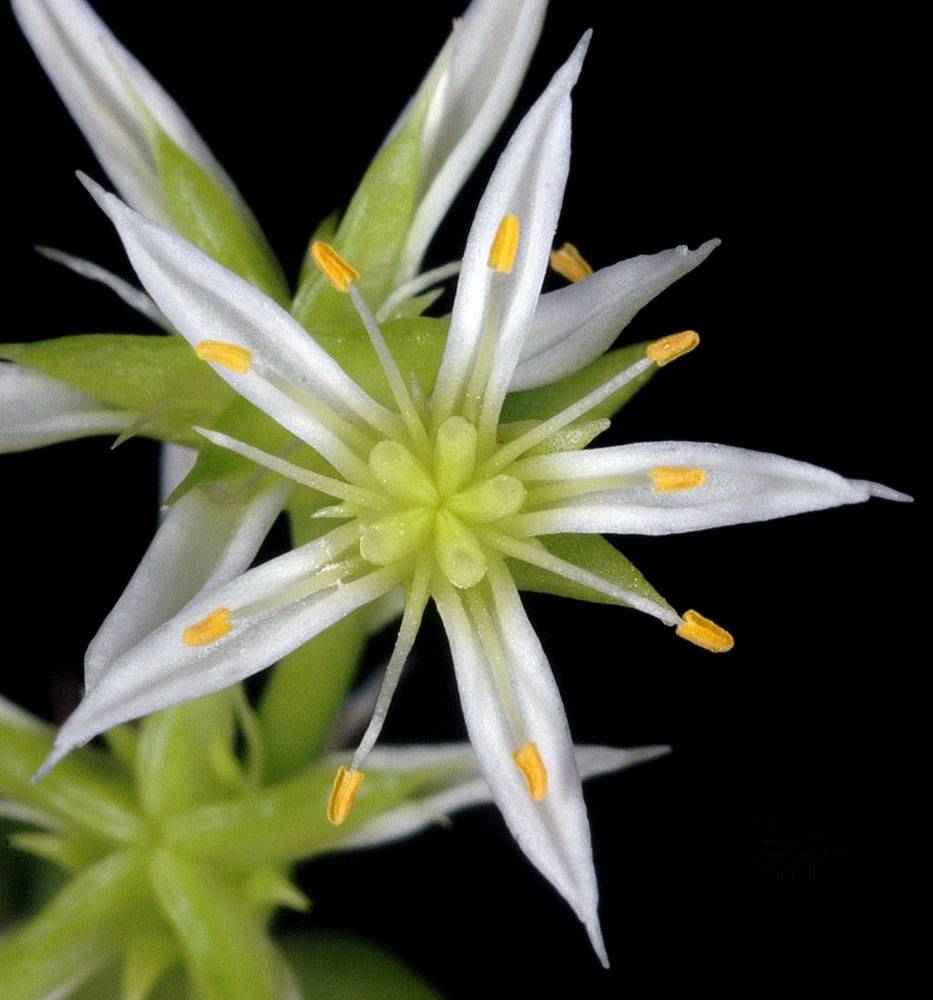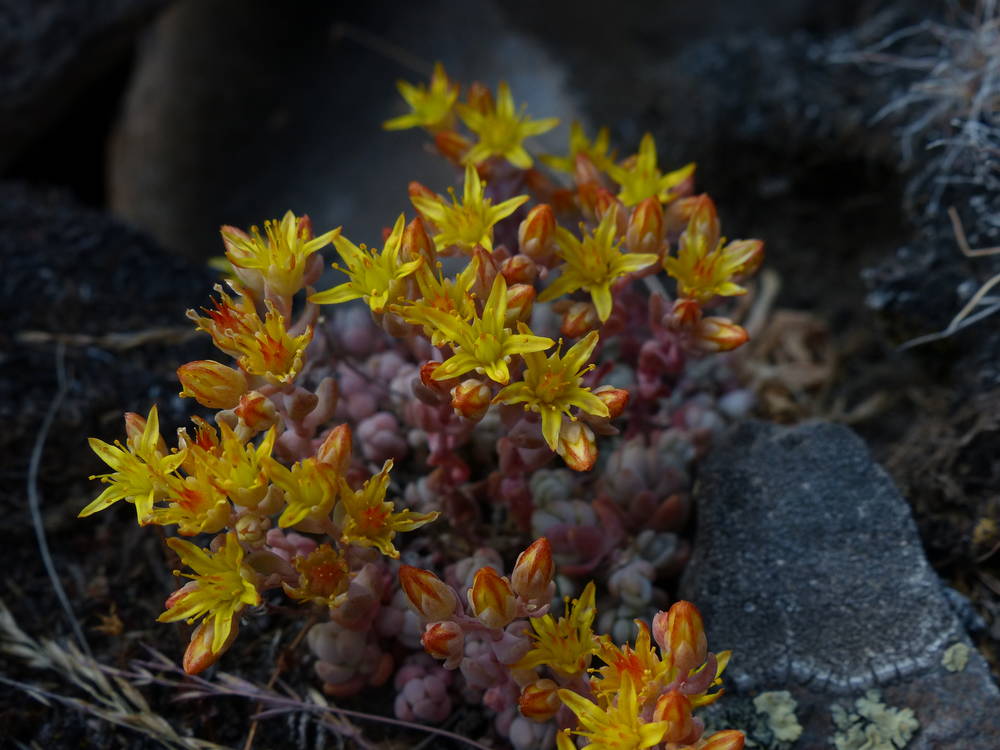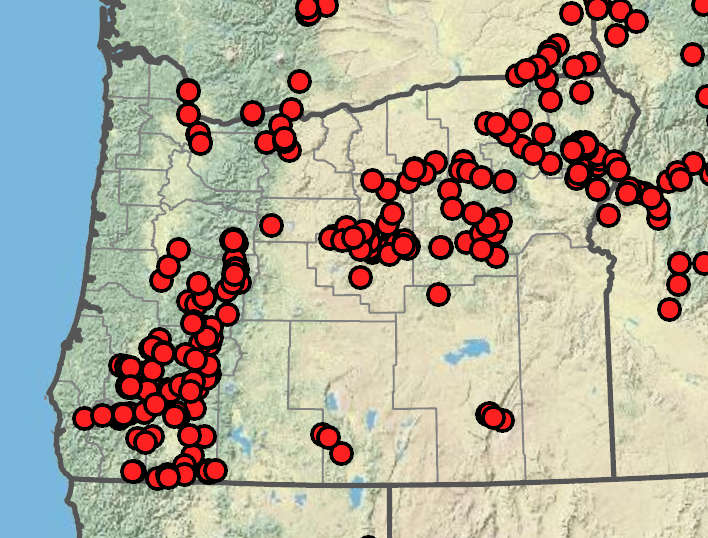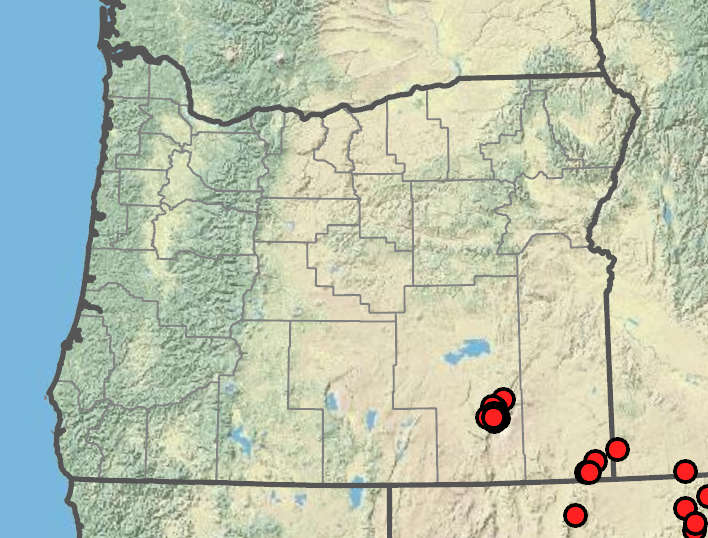Sedum stenopetalum
Sedum debile
wormleaf stonecrop
weakstem stonecrop
decumbent, branched, with terminal rosettes.
decumbent, branched, with erect rosettes.
erect, branched, 10–43 cm;
stem leaves alternate, linear, with basal scarious spurs and producing offset rosettes in their axils; bulbils present.
erect, decumbent or ascending; simple, 3–12 cm;
stem leaves opposite or whorled; ovate-elliptic, dried stems ~1 mm thick.
rosette leaves persistent, spreading to erect, narrowly oblanceolate; narrow and often rounded in cross section, 4.3–13.8 × 1.4–2.7 mm, green to red, bases with small spur;
margins sometimes papillose-ciliate; papillae 0.1–0.15 mm;
tips acuminate or attenuate;
surfaces not glaucous, dried leaves strongly keeled.
opposite or rarely alternate, ascending, usually elliptic, oblanceolate or obovate, subterete, 4.2–7.2 × 2.8–4.3 mm, pale green, speckled with pink, sometimes reddish, bases not spurred;
tips widely rounded;
surfaces slightly glaucous; dull, minutely papillose.
solitary flowers or small cymes with 9–15(25) flowers, mostly 3-branched;
primary branches sometimes dichotomously forked;
bracts like other leaves but smaller.
cymes with 2–7 flowers, 2-branched;
bracts similar to leaves but smaller.
(3)5(8)-parted;
sepals distinct, lanceolate to ovate, 2–3.7 × 0.8–1.7 mm, yellow, yellow-green; greenish, white, or cream-colored;
tips acute or acuminate;
petals spreading horizontally; distinct, lanceolate to elliptic; widest at or below middle, 5.4–11 mm, yellow or white with green or brown;
keel white;
tips obtuse to long-acuminate, sometimes apiculate;
filaments yellow or white;
anthers yellow;
ovaries glandular-pustulose.
5-parted;
sepals erect, 2–4.2 × 1.3–2 mm;
tips obtuse;
surface glaucous;
petals erect at bases but then widely spreading, elliptic-lanceolate, 6–9 mm, yellow;
tips obtuse with apiculus;
filaments yellow;
anthers yellow.
widely spreading when mature, fused near base, light green to brown, papillose, rarely glandular-pustulose.
erect, connate basally; straw-colored with purple stripes.
=64.
=16.
Sedum stenopetalum
Sedum debile
Western North America. 2 subspecies.
Sedum stenopetalum is easily identified by its linear leaves, and by the small rosettes in the axils of all or most of the leaves on the flowering stems. These rosettes may bear more or less deformed, petal-less, terminal flowers. Because plants usually grow from overwintering rosettes that are independent of the parent plant, they usually appear biennial but can be considered clones of long-lived perennials. Plants with a single, terminal flower (sometimes replaced by a rosette), have been segregated as S. stenopetalum ssp./var. monanthum. The range of this putative taxon is completely overlapped by the typical form, and the two are sometimes found in a single population.
Rock outcrops. Flowering Jun–Aug. 1500–2800 m. BR. ID, NV; northeast to MT, southeast to NM. Native.
In our area, the only similar Sedum growing with S. debile is S. lanceolatum. The two have similar flowers, but S. lanceolatum seems to bloom earlier. Sedum debile has paler, glaucous leaves with rounded tips, while S. lanceolatum has reddish leaves with pointed tips. The dense, rounded rosettes of S. debile break off and roll about in wind; they seem to be an important form of reproduction in this species.
Barbara Wilson, Richard Brainerd, Nick Otting
Barbara Wilson, Richard Brainerd, Nick Otting
- Local floras:
BC,
CA,
OR,
WA
- Local Web sites:
CalFlora,
CalPhotos,
Flora NW,
PNW Herbaria,
Turner Photog.
WildflowerSearch
iNaturalist (observations)
USDA Plants Database
- LBJ Wildflower Center
- SEINet
- Plants of the World Online
- Encyclopedia of Life
- Wikipedia
- Google Image Search





